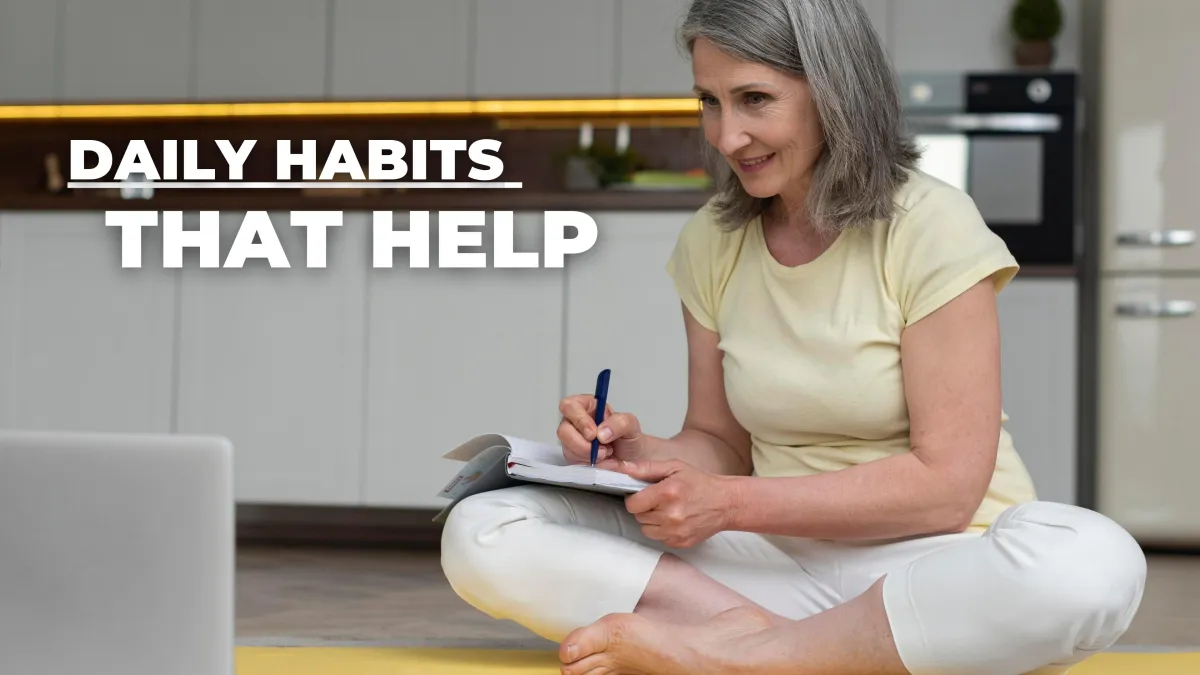
Daily Habits That Help
Daily Habits That Help (or Hurt) Your Spine with Scoliosis
By Ed Paget, Osteopath & Creator of the Scoliosis Correction Protocol

Living with scoliosis means paying a bit more attention to how everyday habits affect your spine. Small choices made consistently can either support your spinal health or add unnecessary strain. Whether you’re following a structured program like the Scoliosis Correction Protocol or simply want to be kinder to your back, these daily habits can make a big difference.
Habits That Help Your Spine
1. Maintain Good Posture Throughout the Day
Scoliosis affects spinal alignment, so being mindful of posture while sitting, standing, or walking is key. Try to keep your shoulders relaxed and back, your head aligned over your spine, and avoid slouching. Using ergonomic chairs or standing desks can help maintain natural spinal curves. Some schools of Scoliosis management like the Schroth Method use active posture correction as a core part of their programming.
2. Take Regular Movement Breaks
Sitting or standing in the same position for too long can tighten muscles and increase discomfort. Set a timer every 30–45 minutes to stand up, stretch, or walk around. Gentle movement helps circulation and prevents stiffness.
3. Sleep in a Spine-Friendly Position
Sleeping on your back with a pillow under your knees or on your side with a pillow between your legs can keep your spine aligned overnight. Choose a mattress that’s firm enough to support your body but soft enough to cushion pressure points. For a more in-depth guide to sleeping with scoliosis you can watch this video here: https://youtu.be/ULSHxGS2Xmg
4. Stay Hydrated and Eat Nutrient-Rich Foods
Hydration keeps spinal discs healthy and flexible, while a balanced diet with plenty of calcium, vitamin D, and magnesium supports bone health. Good nutrition is a key part of managing scoliosis over time.
5. Practice Gentle Core and Back Strengthening
Incorporating gentle exercises to strengthen your core and back muscles helps support your spine and reduce uneven forces. The Scoliosis Correction Protocol includes specific movements designed for this purpose.
Habits That Hurt Your Spine
1. Prolonged Poor Posture
Slouching, leaning on one hip, or sitting cross-legged for hours can worsen muscular imbalances and add strain to your scoliosis curve. Try to avoid positions that cause uneven weight distribution.
2. Ignoring Pain or Discomfort
Pushing through pain or ignoring signs of spinal stress can lead to worsening symptoms. It’s important to listen to your body and adjust activities or seek professional advice when needed.
3. Carrying Heavy Bags on One Shoulder
Consistently carrying weight unevenly can exacerbate spinal curvature and muscle tension. Use backpacks with two straps, or switch sides regularly to balance the load.
4. Wearing Unsupportive Footwear
Flat shoes, flip-flops, or high heels provide little support and can affect your posture and gait, leading to increased spinal stress over time. This is especially true for people who have not strengthened their feet to wear barefoot shoes. However, a graded progression to barefoot shoes can have a beneficial strengthening effect on your feet if done slowly as this study shows. https://livrepository.liverpool.ac.uk/3137687/
5. Skipping Movement or Exercise
Avoiding physical activity can weaken muscles and reduce flexibility, making scoliosis symptoms worse. Finding a sustainable routine of gentle movement is crucial.
Your daily habits play a powerful role in managing scoliosis. By creating supportive routines and avoiding habits that add strain, you’re investing in long-term spinal health and comfort.
If you're looking to improve your daily habits with scoliosis, focusing on posture, gentle movement, and body awareness can go a long way. Small, consistent changes in your routine like how you sit, move, and rest can lead to noticeable improvements in comfort and mobility over time.